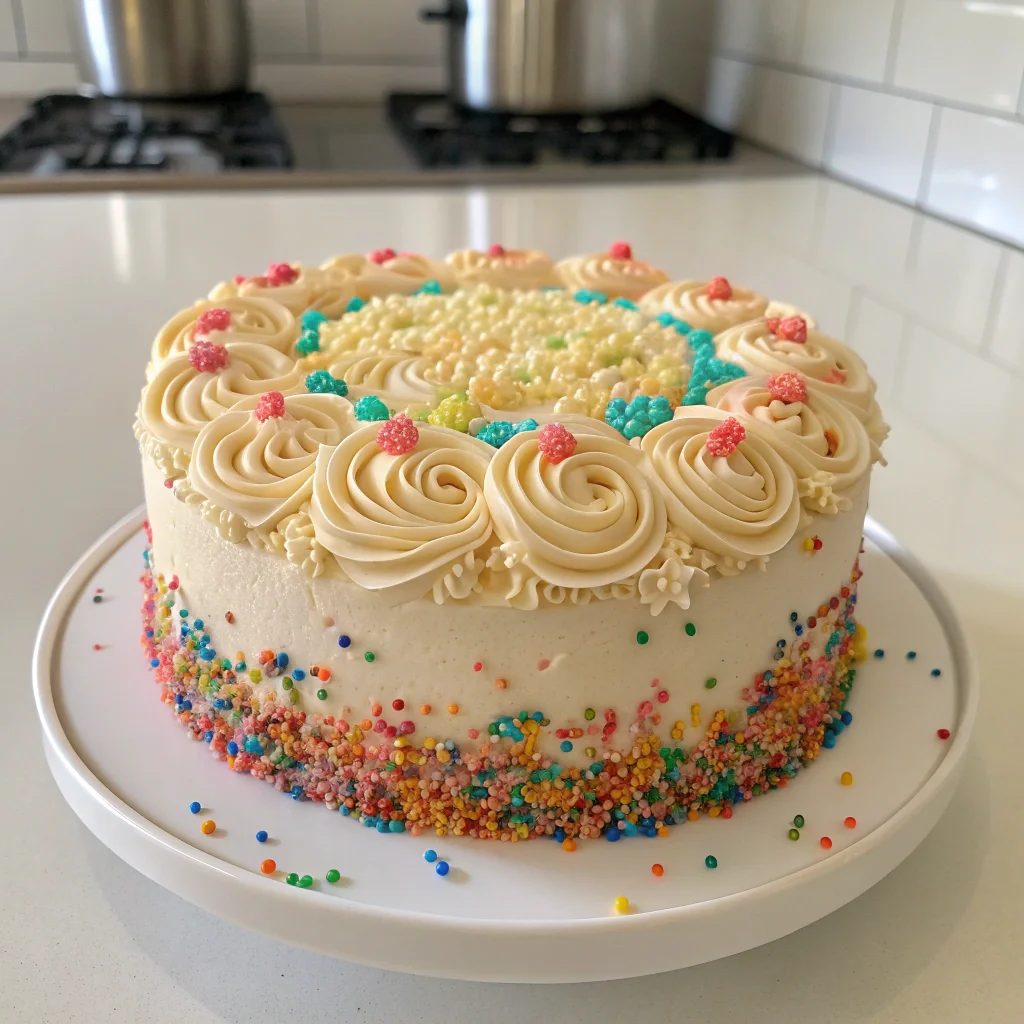Introduction
When Ella Chef first began decorating cakes, it was not in a professional kitchen but at her small home table, armed with a piping bag, a few sprinkles, and a heart full of creativity. What started as a simple attempt to make her daughter’s birthday cake special turned into a lifelong passion. Ella discovered that cake decorating is more than art—it’s storytelling through sweetness. Every swirl of frosting and sprinkle of color tells a story of celebration, love, and care. Today, she inspires bakers everywhere to turn simple cakes into beautiful masterpieces, one decoration at a time.

Cake Decorating Guide
Ingredients
Equipment
Method
- Prepare a fully cooled cake before starting. Trim any uneven tops using a serrated knife to create a smooth surface.
- In a large bowl, beat butter with an electric mixer until creamy. Gradually add powdered sugar, mixing on low speed until combined.
- Add cream and vanilla extract, then beat on high speed for 2–3 minutes until the frosting is light and fluffy.
- Divide the frosting into bowls and tint with different colors using food gels if desired.
- Apply a thin crumb coat over the cake to seal in crumbs. Chill for 15 minutes.
- Spread a smooth final layer of frosting using a spatula or offset spreader. Rotate the cake on a turntable for even coverage.
- Use piping bags with decorative tips to create borders, rosettes, or swirls. Add sprinkles, pearls, or other edible decorations to finish.
- Refrigerate the cake for at least 20 minutes before serving to set the frosting.
Nutrition
Notes
How to Make Cake Decorating
Start by ensuring your cake is completely cooled—this step is crucial to prevent the frosting from melting. Use a serrated knife to level the top, creating a smooth base for your design. To make the buttercream frosting, beat softened butter until smooth and creamy. Gradually add sifted powdered sugar, mixing on low speed to avoid a sugar cloud. Once incorporated, add heavy cream and vanilla extract, then whip at high speed until light and fluffy. This creates the perfect consistency for spreading and piping.
If you plan to use multiple colors, divide the frosting into separate bowls and tint each with food coloring gel. Gels produce vibrant shades without altering texture. Apply a thin “crumb coat” to the cake—a light layer of frosting that traps crumbs and provides a clean base for the final layer. Refrigerate the cake for about 15 minutes to firm up the crumb coat.
Next, apply the final layer of frosting with an offset spatula, smoothing the surface as you rotate the cake on a turntable. For decoration, use piping bags fitted with various tips to create rosettes, swirls, borders, or floral patterns. Add sprinkles, edible pearls, or other decorations to personalize your design. For a professional touch, combine textures—smooth sides with piped edges or a gradient of colors using the ombré technique. Finally, refrigerate the decorated cake for about 20 minutes to set the frosting and lock in freshness.
Conclusion
Cake decorating transforms a simple dessert into an edible masterpiece, where creativity meets craftsmanship. As Ella Chef loves to remind her students, “Every swirl of frosting tells a story.” Whether you’re crafting a birthday cake or experimenting for fun, decorating offers endless opportunities to express artistry and joy. With just buttercream, color, and imagination, you can turn any cake into a centerpiece that delights the eyes as much as it pleases the taste buds. Remember: practice brings confidence—and every cake you decorate is a new chapter in your sweet story.
